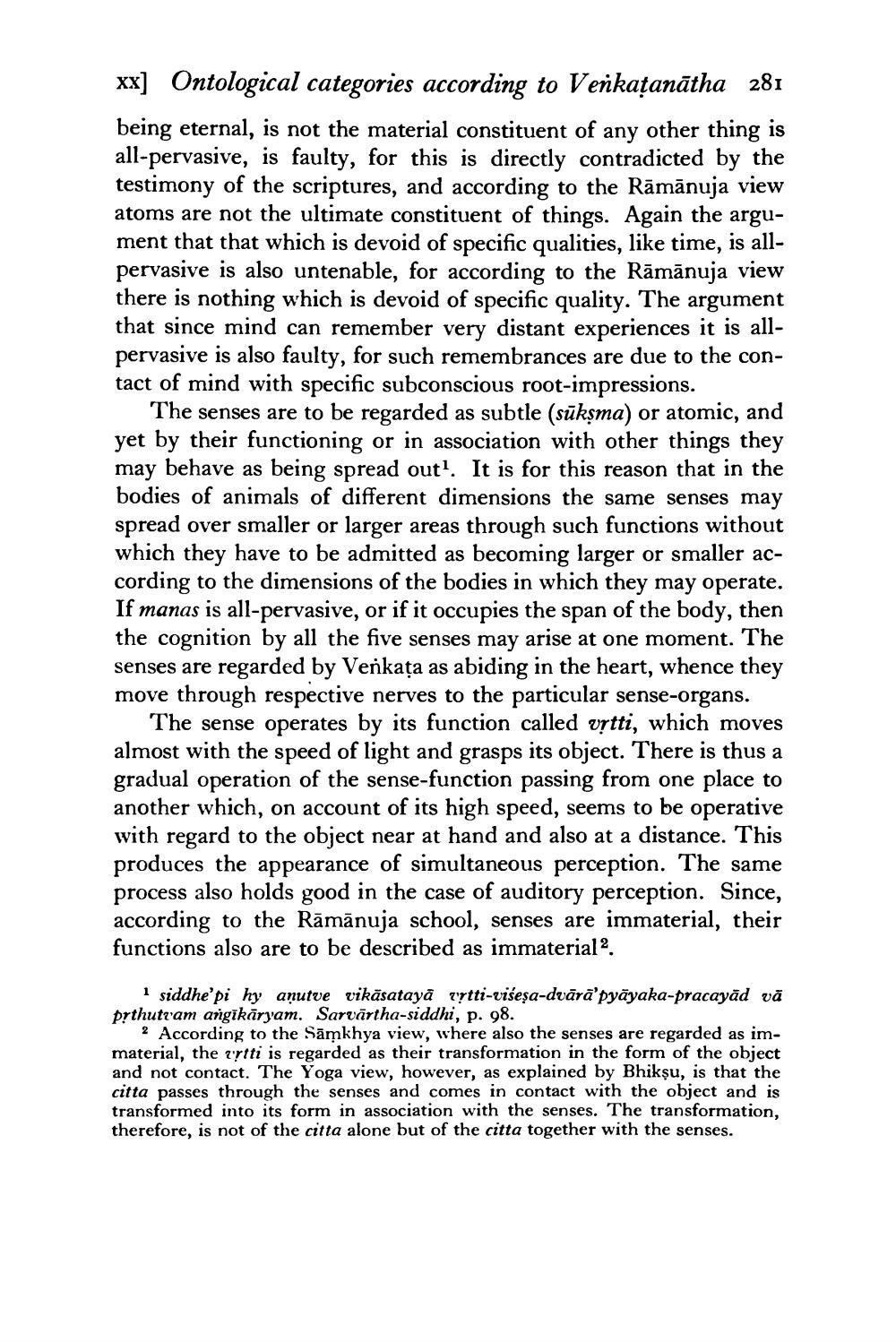________________
xx] Ontological categories according to Venkațanātha 281 being eternal, is not the material constituent of any other thing is all-pervasive, is faulty, for this is directly contradicted by the testimony of the scriptures, and according to the Rāmānuja view atoms are not the ultimate constituent of things. Again the argument that that which is devoid of specific qualities, like time, is allpervasive is also untenable, for according to the Rāmānuja view there is nothing which is devoid of specific quality. The argument that since mind can remember very distant experiences it is allpervasive is also faulty, for such remembrances are due to the contact of mind with specific subconscious root-impressions.
The senses are to be regarded as subtle (sükşma) or atomic, and yet by their functioning or in association with other things they may behave as being spread out?. It is for this reason that in the bodies of animals of different dimensions the same senses may spread over smaller or larger areas through such functions without which they have to be admitted as becoming larger or smaller according to the dimensions of the bodies in which they may operate. If manas is all-pervasive, or if it occupies the span of the body, then the cognition by all the five senses may arise at one moment. The senses are regarded by Venkata as abiding in the heart, whence they move through respective nerves to the particular sense-organs.
The sense operates by its function called vrtti, which moves almost with the speed of light and grasps its object. There is thus a gradual operation of the sense-function passing from one place to another which, on account of its high speed, seems to be operative with regard to the object near at hand and also at a distance. This produces the appearance of simultaneous perception. The same process also holds good in the case of auditory perception. Since, according to the Rāmānuja school, senses are immaterial, their functions also are to be described as immaterial 2.
1 siddhe'pi hy aņutve vikāsatayā yrtti-višeșa-dvārā pyāyaka-pracayād vă prthutram argikāryam. Sarvārtha-siddhi, p. 98.
2 According to the Sāmkhya view, where also the senses are regarded as immaterial, the artti is regarded as their transformation in the form of the object and not contact. The Yoga view, however, as explained by Bhikṣu, is that the citta passes through the senses and comes in contact with the object and is transformed into its form in association with the senses. The transformation, therefore, is not of the citta alone but of the citta together with the senses.




